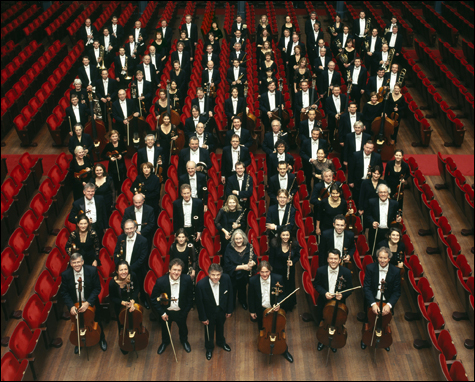
THE ROYAL CONCERTGEBOUW ORCHESTRA OF AMSTERDAM: Only the Berlin and the Vienna
Philharmonics play like this. |
The first LP I ever bought, way back in 1963, offered Chopin’s E-minor piano concerto performed by obscure artists — Bella Davidovich with Arvids Jansons leading the USSR State Symphony Orchestra — on the equally obscure Soviet Mezhdunarodnaya Kniga label. The release has never been transferred to CD, and even the LP languishes in obscurity, unknown to Google or eBay; yet it’s as fine a performance as any I know, unsurpassed by the likes of Pollini and Argerich, and a major reason is the steady, tender hand of Latvian conductor Jansons, who treats Chopin’s oft-denigrated orchestration with affection and respect.
Like father, like son? Not exactly — Mariss Jansons, who came to Symphony Hall Friday with the Royal Concertgebouw Orchestra of Amsterdam, is more given to passionate tempo fluctuations than his dad was (at least to judge by that one recording). But he has the same grasp of structure and dance pulse and instrumental balance, and the same gift for turning notes into music. This Boston visit by the Concertgebouw, its first since 1999, was sponsored by the Celebrity Series, which touted the orchestra as “one of the world’s leading symphonic ensembles” — an understatement, on the evidence of what we heard Friday. Only the Berlin and the Vienna Philharmonics play like this, and for the Berliners’ Symphony Hall visit last November, the Celebrity Series was obliged to charge a top price of $187; top price for the Concertgebouw was $80. And the BSO? “American orchestras are very disciplined, technically perfect, rhythmical,” Jansons told the New York Times’ Alan Riding in 2005. “Europeans give more attention to style and phrasing and sound.” That’s about the size of it, except that this Concertgebouw lacked nothing in discipline or technique or rhythm.
The program seemed ill-chosen, French music — Debussy’s La mer and Berlioz’s Symphonie fantastique — for a city whose own orchestra is steeped in the French tradition. Wouldn’t Mahler’s Fifth Symphony, which had drawn raves in San Francisco and Los Angeles, have been a more appropriate choice? As it turned out, no: this Symphonie fantastique, at least, outshone the ones Seiji Ozawa and James Levine have conducted with the BSO.
La mer requires a precisely delineated color palette if it’s to avoid sounding like ocean background music. Even with the violins grouped on his left (as opposed to the antiphonal deployment that Levine has adopted with the BSO), Jansons, using a baton and conducting from the score, achieved an exemplary clarity. The musical waters glinted and sparkled with sunlight. There was a nasal edge to the winds, a metallic sheen to the brass, and plenty of room for the two harps; the cellos cavorted like sleek poodles. It was aural Champagne, crisp and with many flavors.